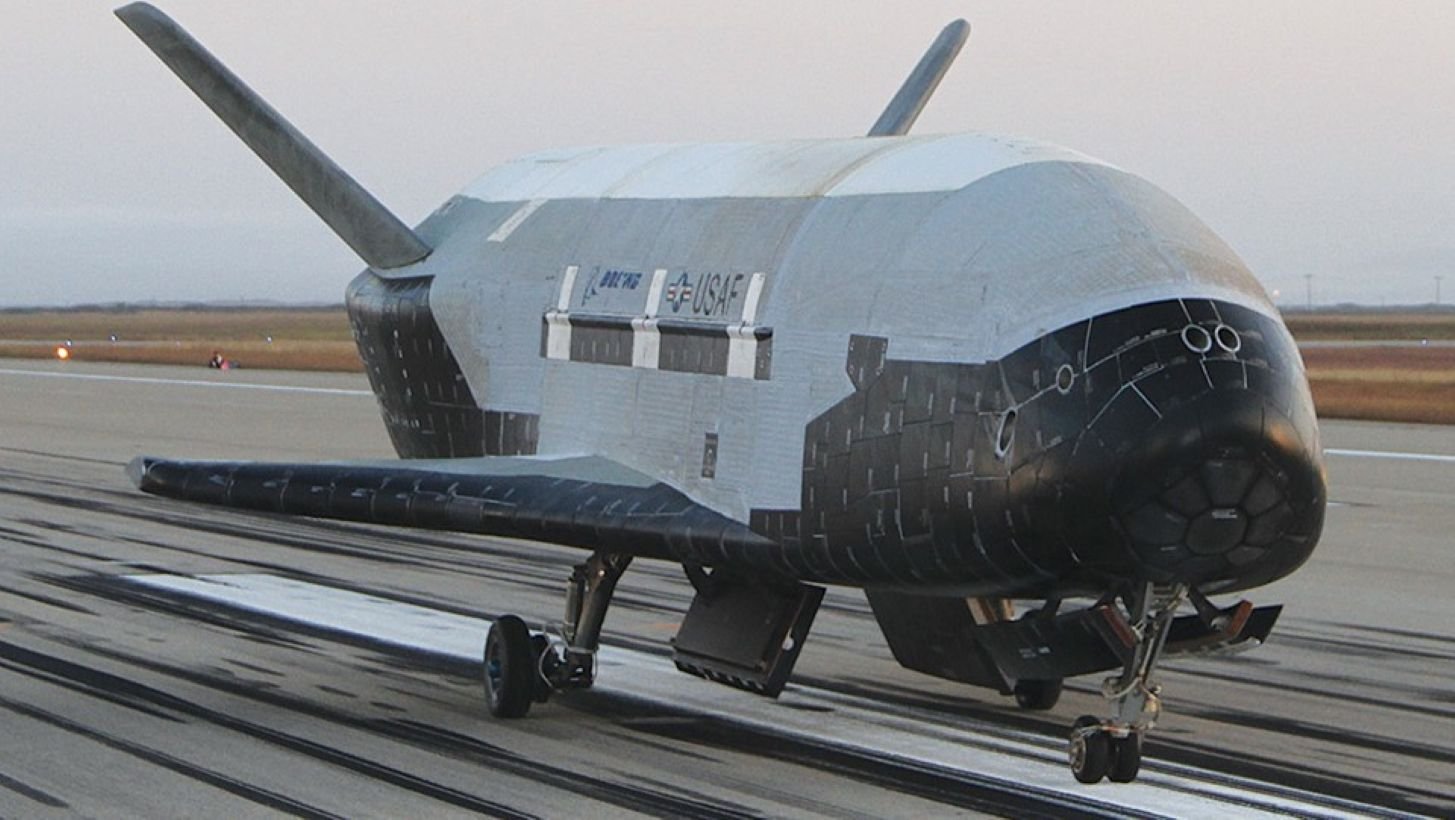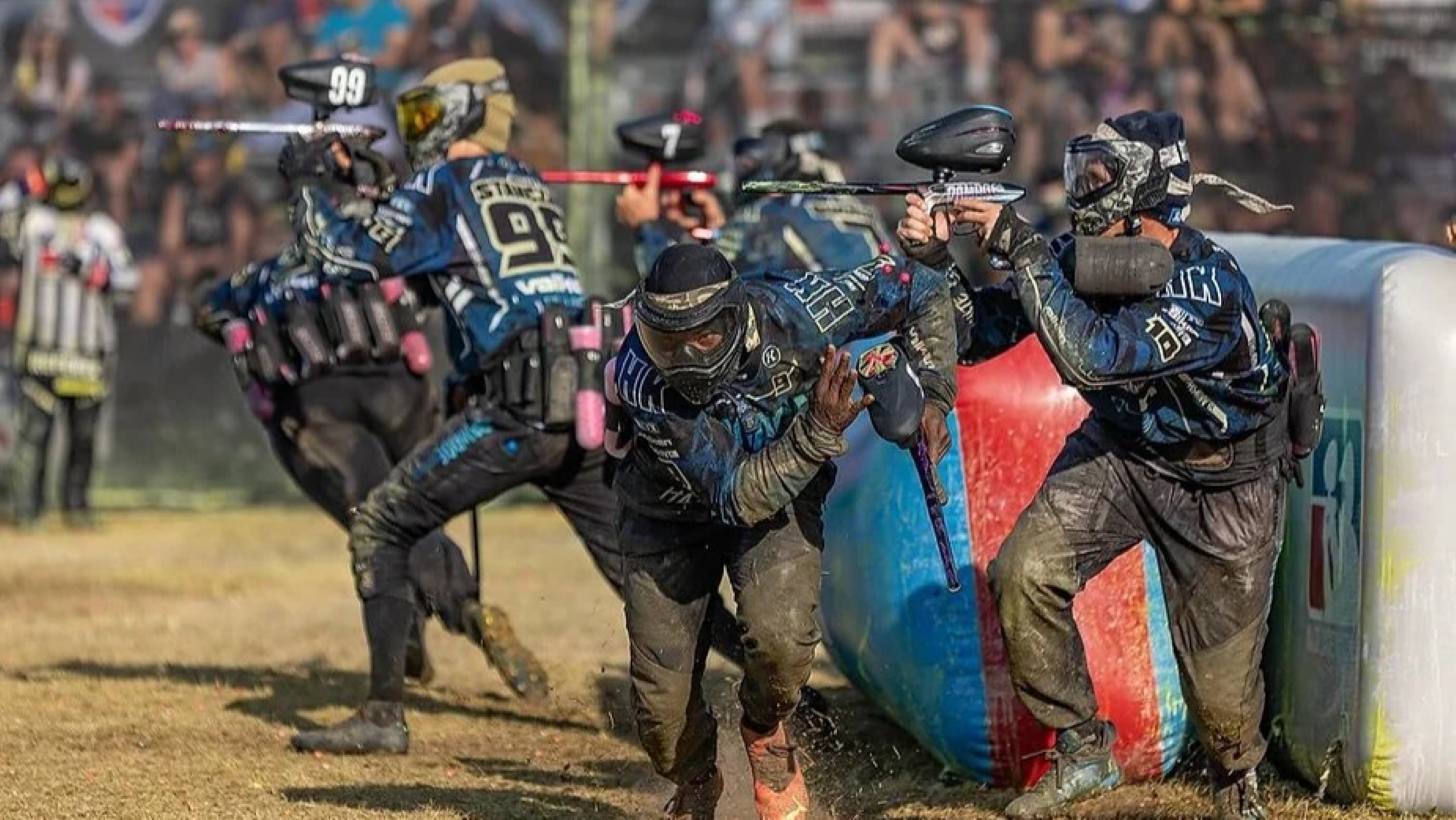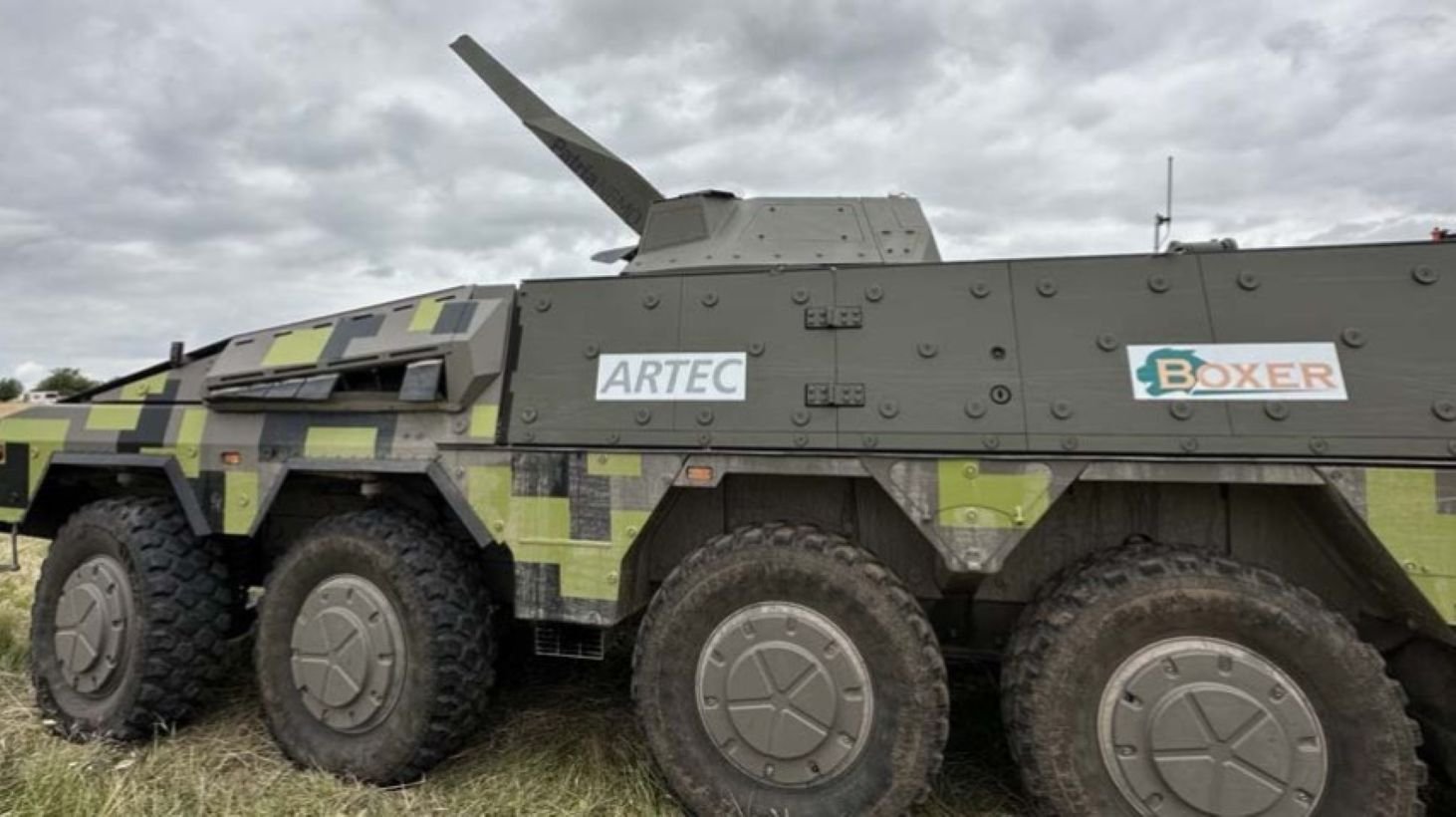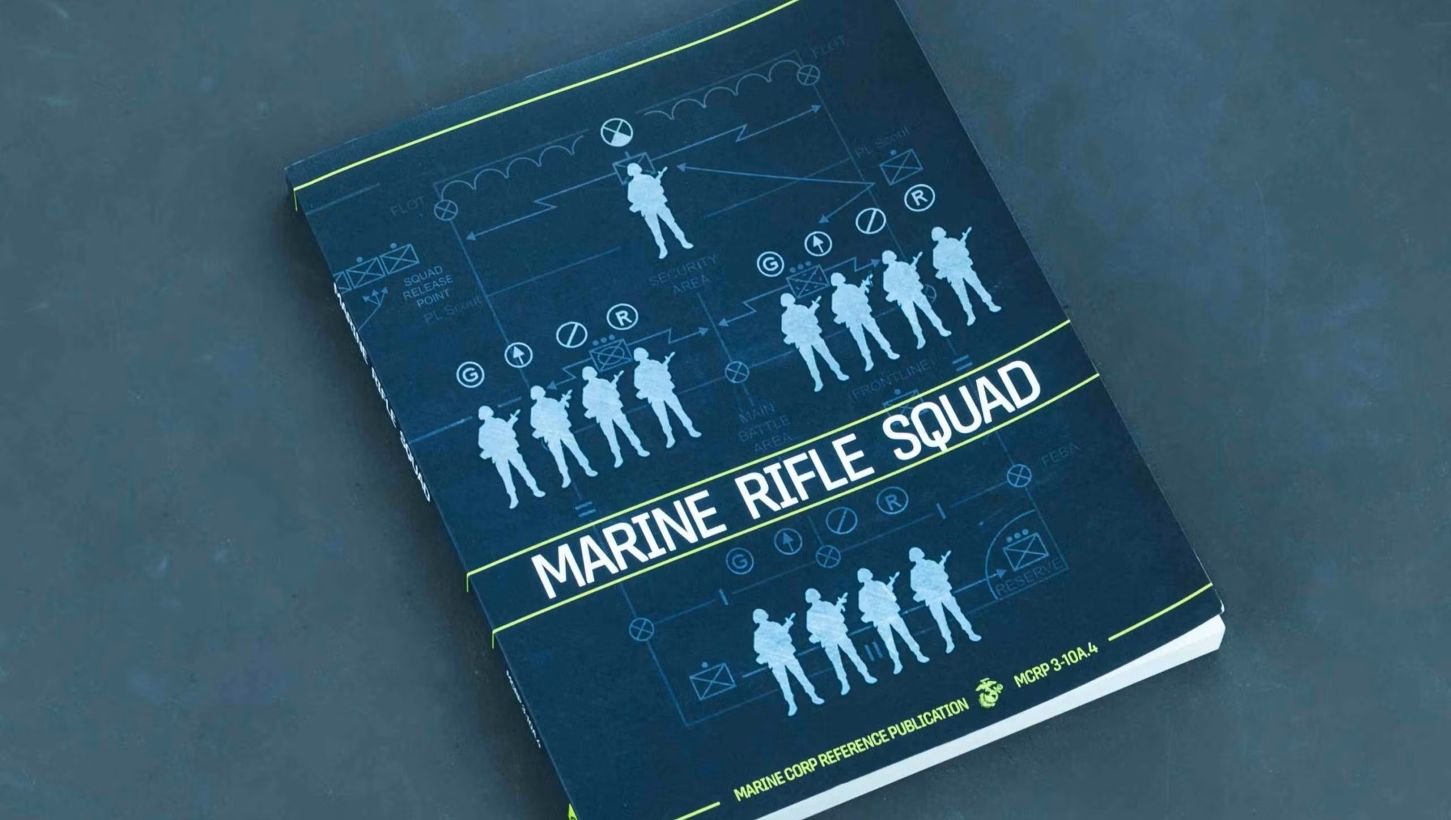-
Posts
790 -
Joined
-
Last visited
Content Type
Profiles
Uncrowned Armory News
Prepping Cookbook
Conspiracy Theories
Uncrowned Tactical Sports News
Prepping
Forums
Events
Everything posted by Uncrowned Guard
-
Revelations on Rapid Radios’ Nationwide Reach Rapid Radios, a company originating from Michigan, has used promotional means like Facebook to establish the robustness and reach of their walkie-talkie product. They have touted the gadget’s capability to function in any location, such as showers, lakes, camping grounds, and porta potties, with a claim to a "nationwide range". Strength in Extreme Conditions: Fact or Fiction? The advertisement also goes a step further to state that even in an event as catastrophic as World War 3, the walkie-talkie would maintain its operability. However, this claim draws into question a significant factor: the availability and reliability of mobile network services in such a dire situation. According to Rapid Radios, despite advising consumers not to rely on cell phones, their products are ironically hugely reliant on cellphone network providers. This interdependence is discreetly highlighted in the finer details on the company website where it is stated that Rapid Radios walkie-talkies are operational only within the range of an LTE tower. This implicitly means that, while their gadget may still function if a few cell carriers falter, it would undoubtedly fail in locations void of cell service. Unveiling the Misinformation in Marketing Besides these conflicting statements, Rapid Radios has also come under scrutiny for their reported use of misleading descriptions regarding the commercial value of their products. For instance, the company states in its product listing that it abstains from charging interest or imposing monthly fees for its walkie-talkies, which are typically priced around $400. An extension to this claim is seen in one of their advertisements, where they assert none of their product offerings come with any contracts or fees. However, upon perusing the company's Frequently Asked Questions section, one would find that utilization of the company's walkie-talkies beyond a year incurs an annual cost of $50. The Big Picture for Preppers For those preparing for a potential doomsday scenario, a product relying heavily on modern technology such as Rapid Radios' walkie-talkies might not be the best investment. It would be wise to focus instead on products free from any dependencies on modern infrastructure and not subject to recurring annual charges. View full article
-
- rapid radios
- walkie-talkies
- (and 3 more)
-
Revelations on Rapid Radios’ Nationwide Reach Rapid Radios, a company originating from Michigan, has used promotional means like Facebook to establish the robustness and reach of their walkie-talkie product. They have touted the gadget’s capability to function in any location, such as showers, lakes, camping grounds, and porta potties, with a claim to a "nationwide range". Strength in Extreme Conditions: Fact or Fiction? The advertisement also goes a step further to state that even in an event as catastrophic as World War 3, the walkie-talkie would maintain its operability. However, this claim draws into question a significant factor: the availability and reliability of mobile network services in such a dire situation. According to Rapid Radios, despite advising consumers not to rely on cell phones, their products are ironically hugely reliant on cellphone network providers. This interdependence is discreetly highlighted in the finer details on the company website where it is stated that Rapid Radios walkie-talkies are operational only within the range of an LTE tower. This implicitly means that, while their gadget may still function if a few cell carriers falter, it would undoubtedly fail in locations void of cell service. Unveiling the Misinformation in Marketing Besides these conflicting statements, Rapid Radios has also come under scrutiny for their reported use of misleading descriptions regarding the commercial value of their products. For instance, the company states in its product listing that it abstains from charging interest or imposing monthly fees for its walkie-talkies, which are typically priced around $400. An extension to this claim is seen in one of their advertisements, where they assert none of their product offerings come with any contracts or fees. However, upon perusing the company's Frequently Asked Questions section, one would find that utilization of the company's walkie-talkies beyond a year incurs an annual cost of $50. The Big Picture for Preppers For those preparing for a potential doomsday scenario, a product relying heavily on modern technology such as Rapid Radios' walkie-talkies might not be the best investment. It would be wise to focus instead on products free from any dependencies on modern infrastructure and not subject to recurring annual charges.
-
- rapid radios
- walkie-talkies
- (and 3 more)
-
Introducing Remington's Latest Innovation - The Ranch Hand 22LR Ammunition Renowned firearms and ammunition manufacturer, Remington Ammunition, is thrilled to announce the release of its much-anticipated Ranch Hand 22LR load. This latest addition enriches the existing repertoire of Remington's rimfire ammunition, and is currently being made available to customers and retailers across the country. Remington Debuts its Most Reliable 22LR Round Yet Expressing his excitement, Remington's Rimfire Global Product Line Director, Jason Slinkard, sees the Ranch Hand 22LR as a new milestone. "This signifies Remington's consistent commitment to deliver top-tier ammunition to the market that caters to shooters' demands. We believe that the unrivaled performance and adaptability of the Ranch Hand 22LR will definitely resonate with avid rimfire collectors," stated Slinkard. Exceptional Performance, Versatility - The Ranch Hand 22LR The Ranch Hand 22LR is designed to be seamlessly compatible with 22LR firearms, be it handguns or rifles. With its varying options of hollow point or round nose ammunition, it can be used efficiently for small hunting games, varmint hunting, or even casual plinking. Regardless of the type of firearm or barrel length, the Ranch Hand proves to be versatile and is accessible in 100-round cartons. Customers have the choice of the Ranch Hand 22LR 40GR Plated Round Nose and Ranch Hand 22LR 38GR Plated Hollow Point, both priced at an affordable $12.99 each. True to Remington's heritage, every Ranch Hand 22LR round undergoes stringent testing and quality assurance measures to meet the company's high-quality standards, instilling a sense of trust and reassurance for consumers. Excited customers can now purchase the Ranch Hand 22LR at recognized Remington retailers nationwide. For more information about this groundbreaking addition to Remington's product range or to locate a nearby retailer, please visit www.remington.com. View full article
-
- remington ammunition
- rimfire ammunition
- (and 3 more)
-
Introducing Remington's Latest Innovation - The Ranch Hand 22LR Ammunition Renowned firearms and ammunition manufacturer, Remington Ammunition, is thrilled to announce the release of its much-anticipated Ranch Hand 22LR load. This latest addition enriches the existing repertoire of Remington's rimfire ammunition, and is currently being made available to customers and retailers across the country. Remington Debuts its Most Reliable 22LR Round Yet Expressing his excitement, Remington's Rimfire Global Product Line Director, Jason Slinkard, sees the Ranch Hand 22LR as a new milestone. "This signifies Remington's consistent commitment to deliver top-tier ammunition to the market that caters to shooters' demands. We believe that the unrivaled performance and adaptability of the Ranch Hand 22LR will definitely resonate with avid rimfire collectors," stated Slinkard. Exceptional Performance, Versatility - The Ranch Hand 22LR The Ranch Hand 22LR is designed to be seamlessly compatible with 22LR firearms, be it handguns or rifles. With its varying options of hollow point or round nose ammunition, it can be used efficiently for small hunting games, varmint hunting, or even casual plinking. Regardless of the type of firearm or barrel length, the Ranch Hand proves to be versatile and is accessible in 100-round cartons. Customers have the choice of the Ranch Hand 22LR 40GR Plated Round Nose and Ranch Hand 22LR 38GR Plated Hollow Point, both priced at an affordable $12.99 each. True to Remington's heritage, every Ranch Hand 22LR round undergoes stringent testing and quality assurance measures to meet the company's high-quality standards, instilling a sense of trust and reassurance for consumers. Excited customers can now purchase the Ranch Hand 22LR at recognized Remington retailers nationwide. For more information about this groundbreaking addition to Remington's product range or to locate a nearby retailer, please visit www.remington.com.
-
- remington ammunition
- rimfire ammunition
- (and 3 more)
-
Impending Orbital Adjustments for U.S. Military Spaceplane The distinguished X-37B, a crucial component of the U.S. military's evolving space infrastructure, is set to undergo a series of tactical amendments to its orbital path. These adaptations involve dispensing the service module, a vital structure responsible for accommodating speculative payloads and scientific apparatus. Revolutionary Aerobraking As a Sustainable Solution In a groundbreaking maneuver aimed at modifying its existing Earth orbit, the X-37B is set to carry out a series of aerobraking techniques, which was confirmed by the U.S. Space Force on October 10. The methodical, incremental process of brushing the planetary exosphere utilizes atmospheric friction to revise the spacecraft's trajectory while optimizing its fuel usage. These astute tactical moves demonstrate the uncompromising commitment of the Space Force to abide by the guidelines laid down for space debris mitigation and thereby endorse responsible space operations. Innovation in Operation: The Role of the X-37B Spacecraft Launched from NASA's Kennedy Space Center in Florida aboard a SpaceX Falcon Heavy rocket, the X-37B, a collaborative effort between the U.S. Space Force and the Air Force Rapid Capabilities Office, has been operating from a highly elliptical orbit since December 28, 2023. In the course of its seventh mission, the spaceplane conducted groundbreaking experiments on radiation effects, along with testing of space domain awareness technologies. Amid potent space capabilities shown by other nations, the role of the X-37B becomes more critical. Its launch was just a fortnight after China propelled its Shenlong spaceplane into orbit, stirring debate about the space ambitions of the two nations. Known for its ability to operate between 150 to 500 miles above Earth, the X-37B has successfully survived in orbit for considerable durations, with some missions surpassing the 900-day mark. The resultant longevity enables deep-diving studies on the impacts of space dynamics on diverse technologies and materials. Michelle Parker, the Vice President of Boeing’s Space Mission Systems, commended the X-37B's unique capabilities, recognizing it as the most competent, dynamic, and versatile space platform to date. She also promised that, after executing its planned aerobraking activities, the vehicle would recommence its experiments and objectives. Upon accomplishing the set tasks, the spaceplane is designed to descend back to Earth using its self-governing landing system, much like a traditional aircraft, thereby boosting the efficiency of its space conduct. While the U.S. Space Force remains tight-lipped about the expected timeline for the ongoing mission, Gen. Chance Saltzman, chief of space operations, romanticizes the significant milestone that the X-37B has marked for the U.S. Space Force, enhancing its stellar proficiency and skill set in a formidable domain. View full article
-
- x-37b
- u.s. space force
-
(and 3 more)
Tagged with:
-

Military X-37B Spaceplane's Innovative Orbital Strategies
Uncrowned Guard posted an article in Defense Industry
Impending Orbital Adjustments for U.S. Military Spaceplane The distinguished X-37B, a crucial component of the U.S. military's evolving space infrastructure, is set to undergo a series of tactical amendments to its orbital path. These adaptations involve dispensing the service module, a vital structure responsible for accommodating speculative payloads and scientific apparatus. Revolutionary Aerobraking As a Sustainable Solution In a groundbreaking maneuver aimed at modifying its existing Earth orbit, the X-37B is set to carry out a series of aerobraking techniques, which was confirmed by the U.S. Space Force on October 10. The methodical, incremental process of brushing the planetary exosphere utilizes atmospheric friction to revise the spacecraft's trajectory while optimizing its fuel usage. These astute tactical moves demonstrate the uncompromising commitment of the Space Force to abide by the guidelines laid down for space debris mitigation and thereby endorse responsible space operations. Innovation in Operation: The Role of the X-37B Spacecraft Launched from NASA's Kennedy Space Center in Florida aboard a SpaceX Falcon Heavy rocket, the X-37B, a collaborative effort between the U.S. Space Force and the Air Force Rapid Capabilities Office, has been operating from a highly elliptical orbit since December 28, 2023. In the course of its seventh mission, the spaceplane conducted groundbreaking experiments on radiation effects, along with testing of space domain awareness technologies. Amid potent space capabilities shown by other nations, the role of the X-37B becomes more critical. Its launch was just a fortnight after China propelled its Shenlong spaceplane into orbit, stirring debate about the space ambitions of the two nations. Known for its ability to operate between 150 to 500 miles above Earth, the X-37B has successfully survived in orbit for considerable durations, with some missions surpassing the 900-day mark. The resultant longevity enables deep-diving studies on the impacts of space dynamics on diverse technologies and materials. Michelle Parker, the Vice President of Boeing’s Space Mission Systems, commended the X-37B's unique capabilities, recognizing it as the most competent, dynamic, and versatile space platform to date. She also promised that, after executing its planned aerobraking activities, the vehicle would recommence its experiments and objectives. Upon accomplishing the set tasks, the spaceplane is designed to descend back to Earth using its self-governing landing system, much like a traditional aircraft, thereby boosting the efficiency of its space conduct. While the U.S. Space Force remains tight-lipped about the expected timeline for the ongoing mission, Gen. Chance Saltzman, chief of space operations, romanticizes the significant milestone that the X-37B has marked for the U.S. Space Force, enhancing its stellar proficiency and skill set in a formidable domain.-
- x-37b
- u.s. space force
-
(and 3 more)
Tagged with:
-
No Assurances from Israel on Refraining from Targeting Iran's Nuclear Facilities, State Department Official Reveals Unquestionably, the US-Israel-Iran triangle has been treading on thin ice lately. The latest information feeding the tension comes from a high-ranking US State Department official who, in an interaction with CNN on Friday, revealed that Israel has offered no guarantees to Washington about abstaining from targeting Iran's nuclear facilities, even in the wake of Iranian missile strikes. Uncertainty Surrounds Potential Retaliation at Hamas Attack Anniversary The official reckoned that predicting whether Israel would leverage the October 7 anniversary of the Hamas attacks to respond remains challenging. Contrasting hope with pragmatism, they stated, “We hope and expect some wisdom alongside strength, but guarantees in such circumstances are elusive.” These comments reflect Washington's stance of supporting Israel’s potential response to Iran’s missile attack, all the while worrying extensively about the risks of a broader regional conflict amid an already turbulent Middle East. Despite the brewing tension and complex dynamics, President Biden affirmed earlier this week that the US would not endorse any Israeli move to target Iran’s nuclear program. In the same trial of thought, he encouraged an alternate course of action, stating, “A wiser move in their situation would possibly be considering alternatives rather than setting sights on striking oil fields.” Waiting Game Ends, Decision Time Begins A cloud of uncertainty also looms over the timeframe for Israel’s response. It remains undisclosed when the decision will be made or implemented, although President Biden did hint that it won't be an immediate decision from Israel. In reference to using the first anniversary of the Hamas attack as a possible time for Israel's retaliation against Iran, the official noted that Israel might want to steer clear of the historical significance of the day, suggesting any retaliation could likely occur before or after October 7. In the midst of sharpening tensions and escalating incidents, the US has been ceaselessly striving to contain the conflict and avert a full-blown war for a considerable time now, achieving some success as the official revealed, "We are on the brink." Despite emerging tensions, Israel and the US have maintained solid communication lines, keeping in touch around the clock as shared by President Biden. On Wednesday, Deputy Secretary of State Kurt Campbell confirmed these ongoing efforts at communication and understanding. On Iran's attack on Israel, he disclosed, "The contemplation of response options isn't just confined to Israel but involves the United States as well," further emphasizing that careful deliberation is the overriding message in dealing with Iran. View full article
-
- us-israel relations
- iran nuclear tensions
- (and 3 more)
-
No Assurances from Israel on Refraining from Targeting Iran's Nuclear Facilities, State Department Official Reveals Unquestionably, the US-Israel-Iran triangle has been treading on thin ice lately. The latest information feeding the tension comes from a high-ranking US State Department official who, in an interaction with CNN on Friday, revealed that Israel has offered no guarantees to Washington about abstaining from targeting Iran's nuclear facilities, even in the wake of Iranian missile strikes. Uncertainty Surrounds Potential Retaliation at Hamas Attack Anniversary The official reckoned that predicting whether Israel would leverage the October 7 anniversary of the Hamas attacks to respond remains challenging. Contrasting hope with pragmatism, they stated, “We hope and expect some wisdom alongside strength, but guarantees in such circumstances are elusive.” These comments reflect Washington's stance of supporting Israel’s potential response to Iran’s missile attack, all the while worrying extensively about the risks of a broader regional conflict amid an already turbulent Middle East. Despite the brewing tension and complex dynamics, President Biden affirmed earlier this week that the US would not endorse any Israeli move to target Iran’s nuclear program. In the same trial of thought, he encouraged an alternate course of action, stating, “A wiser move in their situation would possibly be considering alternatives rather than setting sights on striking oil fields.” Waiting Game Ends, Decision Time Begins A cloud of uncertainty also looms over the timeframe for Israel’s response. It remains undisclosed when the decision will be made or implemented, although President Biden did hint that it won't be an immediate decision from Israel. In reference to using the first anniversary of the Hamas attack as a possible time for Israel's retaliation against Iran, the official noted that Israel might want to steer clear of the historical significance of the day, suggesting any retaliation could likely occur before or after October 7. In the midst of sharpening tensions and escalating incidents, the US has been ceaselessly striving to contain the conflict and avert a full-blown war for a considerable time now, achieving some success as the official revealed, "We are on the brink." Despite emerging tensions, Israel and the US have maintained solid communication lines, keeping in touch around the clock as shared by President Biden. On Wednesday, Deputy Secretary of State Kurt Campbell confirmed these ongoing efforts at communication and understanding. On Iran's attack on Israel, he disclosed, "The contemplation of response options isn't just confined to Israel but involves the United States as well," further emphasizing that careful deliberation is the overriding message in dealing with Iran.
-
- us-israel relations
- iran nuclear tensions
- (and 3 more)
-
Heckler & Koch Introduces HK USA The esteemed German firearms craftsman, Heckler & Koch, unveils a surprising yet thrilling venture, HK USA. This news might seem confusing, as HK USA is not entirely a new phenomenon; albeit with a twist. Previously, HK USA was tasked mainly with importing and assembling Heckler & Koch's weapons with their primary office set in Columbus, Georgia. Meanwhile, the design and manufacturing functions primarily took place in Germany. This modus operandi did create a sense of uncertainty about the firm's dedication to the U.S. commercial market. This resulted in a pool of unanswered demands and features, frustrating the community and giving rise to rumors that Heckler & Koch overlooked its customers, prioritizing their military contracts. HK USA's Expansion Sets a New Precedent Taking leaps forward, HK USA undertakes more than a brand makeover – its five-year endeavor heralds the expansion of the company in the U.S. market by setting up design and manufacturing units. This milestone aims to circumvent the challenges encountered due to the existing German export and U.S. import laws that resulted in the unavailability of various popular models for American shooters. This upheaval was not instigated due to a perceived indifference or aversion to profitability but was a move beneficial for all stakeholders. HK USA's Promising Future With an energetic inaugural step, HK USA has proactively affirmed its intent to present up to three new, or improved platforms, between mid-October and February 2025. The company's announcement on hkpro.com shed light on the upcoming release whilst providing significant clarifications to community queries about production, quality control expectations, and many more. HK fans were ecstatic to learn about this positive shift, especially with the potential release of the MP7, although patience would be needed until HK USA finalizes its plan for 2025 and onwards. Thumbs up for a thrilling future! Fans are eager to know which models, features, or updates HK USA will unveil. There's understandable curiosity about the possible effects of this expansion on pricing structures. Stay tuned and feel free to share your thoughts, anticipations, and predictions below. View full article
-
- heckler & koch
- hk usa
- (and 3 more)
-
Heckler & Koch Introduces HK USA The esteemed German firearms craftsman, Heckler & Koch, unveils a surprising yet thrilling venture, HK USA. This news might seem confusing, as HK USA is not entirely a new phenomenon; albeit with a twist. Previously, HK USA was tasked mainly with importing and assembling Heckler & Koch's weapons with their primary office set in Columbus, Georgia. Meanwhile, the design and manufacturing functions primarily took place in Germany. This modus operandi did create a sense of uncertainty about the firm's dedication to the U.S. commercial market. This resulted in a pool of unanswered demands and features, frustrating the community and giving rise to rumors that Heckler & Koch overlooked its customers, prioritizing their military contracts. HK USA's Expansion Sets a New Precedent Taking leaps forward, HK USA undertakes more than a brand makeover – its five-year endeavor heralds the expansion of the company in the U.S. market by setting up design and manufacturing units. This milestone aims to circumvent the challenges encountered due to the existing German export and U.S. import laws that resulted in the unavailability of various popular models for American shooters. This upheaval was not instigated due to a perceived indifference or aversion to profitability but was a move beneficial for all stakeholders. HK USA's Promising Future With an energetic inaugural step, HK USA has proactively affirmed its intent to present up to three new, or improved platforms, between mid-October and February 2025. The company's announcement on hkpro.com shed light on the upcoming release whilst providing significant clarifications to community queries about production, quality control expectations, and many more. HK fans were ecstatic to learn about this positive shift, especially with the potential release of the MP7, although patience would be needed until HK USA finalizes its plan for 2025 and onwards. Thumbs up for a thrilling future! Fans are eager to know which models, features, or updates HK USA will unveil. There's understandable curiosity about the possible effects of this expansion on pricing structures. Stay tuned and feel free to share your thoughts, anticipations, and predictions below.
-
- heckler & koch
- hk usa
- (and 3 more)
-
The final stop of the 2024 National Xball League season concludes during the World Cup of Paintball presented by Kissimmee Sports, November 6th* - 10th! Teams, Players, Fans & Companies from every corner of the globe will come together for the largest event of the year. Teams will battle it out over FOUR days of fast-paced paintball action! Come join us and watch all of the action LIVE & FREE all weekend long on the Amateur fields or buy a front row ticket to watch the Pro Main Stage. The biggest names in paintball will be present on-site and featuring their latest products as part of our massive event trade show as well as food vendors & fun for the whole family! MUST ATTEND EVENT OF THE YEAR! NXL Home Page Schedule Watch via Major League Paintball
-
Windy City Major Shakes up Season Standings A high-intensity game plan characterized the recently concluded National Xball League (NXL) Windy City Major, resulting in some of the most exhilarating matches this season. All divisions witnessed fierce competition, with championship titles at stake and players vigorously laying the groundwork for the World Cup in November. The professional division in particular has serendipitously gained new levels of competitiveness this year, as each event invites a new mix of teams into the playoff rounds. The Red Legion has been dominant thus far, but a surprising exit in the semi-finals at the Windy City Major may have given the XFactor the chance to secure the season title following a runner-up finish. Tampa Bay Damage ultimately emerged victorious, securing its first victory of the year with an emphatic 5-2 finish against San Antonio, securing a quantum shift upwards in the season rankings. The Tournament Breakdown The game layout was unusually centered around aggressive strategies. Group A witnessed the Red Legion sustain its unbeaten prelims run with a 4-0 record, its most serious threat being the Ironmen in a tight 6-5 win. In Group B, Tampa Bay Damage took the lead with a consistent aggressive play that drove them to their playoff spot. Meanwhile, Group C was dominated by an unbeaten Edmonton Impact, while Chicago Aftershock led in Bracket D with a strong 3-1 record. By the quarter-final stage, the stakes were high and the scores even higher. The semi-finals saw XFactor trounce the Red Legion with a 9-5 victory, while Damage managed to scrape by Impact with a hard-fought 5-4 win. The ultimate clash between Tampa Bay Damage and San Antonio XFactor was marked by several critical shifts in the control of the game, but Damage finally built a winning lead to secure the championship. Impact on Season Standings and Ahead of World Cup The results of the Windy City Major have dramatically transformed the season standings, with XFactor and Tampa Bay Damage demonstrating their potential to pose a serious threat to the previously dominant Red Legion entering the World Cup in November. XFactor benefited the most from this event, ascending to second place overall in the standings due to their runner-up finish. The semi-professional division has remained steady under the control of New Jersey Leverage, while New York Wrecking Crew is slowly closing the gap after their second event win of the season. Big wins in the Windy City Major have shuffled rankings in the lower divisions, keeping the season title race exciting down to the wire. The World Cup now looms as the final and most critical event of the season, given its double-point significance. Teams from across the globe are preparing to travel to the paintball mecca in Orlando, Florida. The stakes have never been higher, with several teams competing for the season title and the World Championship. Get ready to witness the grand conclusion of the 2024 season!
-
- nxl
- windy city major
-
(and 3 more)
Tagged with:
-
Henry Repeating Arms Unveils a New Addition The renowned manufacturer, Henry Repeating Arms is broadening its collection of double-action revolvers, introducing the all-new 10-shot Golden Boy. This .22 caliber gun has long held a place in American hearts, and since the release of Henry’s first rimfire lever guns in 1997, this cartridge has become a central character in their catalog. Given this association with the caliber, it comes as no surprise the Wisconsin-based manufacturer chose to extend their expertise to include this exceptionally designed and quality-constructed series of Henry H016 Golden Boy Revolvers. GOLDEN BOY: A Blend of Tradition and Innovation The Golden Boy is a perfect fusion of traditional double-action charisma and contemporary manufacturing accuracy. It's designed to work with the versatile .22 Short, Long, and Long Rifle cartridge. Emulating the Henry lever action rimfire's lineage, the revolver boasts a deeply blued steel medium-sized frame. American walnut panels grace the grip, complemented by a glittering brass backstrap and trigger guard for an added touch of elegance. Inside, all components are meticulously hand-fitted, ensuring tight tolerances and smooth action that complements its remarkable accuracy. The action is achieved through a linear trigger pull in double action, and a clean crisp break in single action. Enhancing its business appeal, the Golden Boy features a 4-inch round-profile blued steel barrel. A fixed notch rear sight has been cleverly carved into the frame, and three front sight blades are included for elevation adjustments and a predictable point of impact. On top of that, its innovatively designed quick takedown feature helps you spend less time cleaning and more time improving your aim. Design, Price, and Variety The Golden Boy revolver comes in two distinct models; choose between the square Gunfighter-style grips (37 oz) for maximum control, or the rounded Birdhead-style grips (36 oz) for optimal concealment. No matter your preference, the retail price for the Golden Boy sets the bar at $928. Anthony Imperato, the founder and CEO of Henry Repeating Arms, expressed pride in the company's latest addition. He notes that it was about time their flagship rifle was accompanied by an equally considerable revolver. According to Anthony, the goal of Henry Repeating Arms is to bring maximum happiness to its customers, whether they're at the shooting range or in the field. Whether you choose to invest in the Golden Boy Revolver or decide to complete your cowboy kit with a Golden Boy Rifle and a Single Shot 12 Gauge at your side, these offerings from Henry are truly a sight to behold and a joy to shoot. View full article
-

Henry Repeating Arms Launches New 10-Shot Golden Boy Revolver
Uncrowned Guard posted an article in Firearms
Henry Repeating Arms Unveils a New Addition The renowned manufacturer, Henry Repeating Arms is broadening its collection of double-action revolvers, introducing the all-new 10-shot Golden Boy. This .22 caliber gun has long held a place in American hearts, and since the release of Henry’s first rimfire lever guns in 1997, this cartridge has become a central character in their catalog. Given this association with the caliber, it comes as no surprise the Wisconsin-based manufacturer chose to extend their expertise to include this exceptionally designed and quality-constructed series of Henry H016 Golden Boy Revolvers. GOLDEN BOY: A Blend of Tradition and Innovation The Golden Boy is a perfect fusion of traditional double-action charisma and contemporary manufacturing accuracy. It's designed to work with the versatile .22 Short, Long, and Long Rifle cartridge. Emulating the Henry lever action rimfire's lineage, the revolver boasts a deeply blued steel medium-sized frame. American walnut panels grace the grip, complemented by a glittering brass backstrap and trigger guard for an added touch of elegance. Inside, all components are meticulously hand-fitted, ensuring tight tolerances and smooth action that complements its remarkable accuracy. The action is achieved through a linear trigger pull in double action, and a clean crisp break in single action. Enhancing its business appeal, the Golden Boy features a 4-inch round-profile blued steel barrel. A fixed notch rear sight has been cleverly carved into the frame, and three front sight blades are included for elevation adjustments and a predictable point of impact. On top of that, its innovatively designed quick takedown feature helps you spend less time cleaning and more time improving your aim. Design, Price, and Variety The Golden Boy revolver comes in two distinct models; choose between the square Gunfighter-style grips (37 oz) for maximum control, or the rounded Birdhead-style grips (36 oz) for optimal concealment. No matter your preference, the retail price for the Golden Boy sets the bar at $928. Anthony Imperato, the founder and CEO of Henry Repeating Arms, expressed pride in the company's latest addition. He notes that it was about time their flagship rifle was accompanied by an equally considerable revolver. According to Anthony, the goal of Henry Repeating Arms is to bring maximum happiness to its customers, whether they're at the shooting range or in the field. Whether you choose to invest in the Golden Boy Revolver or decide to complete your cowboy kit with a Golden Boy Rifle and a Single Shot 12 Gauge at your side, these offerings from Henry are truly a sight to behold and a joy to shoot. -
The Finnish-German Collaboration Strikes Again Patria, the Finnish defense corporation, has partnered with Germany's defense behemoth Rheinmetall, to reveal the updated version of their highly esteemed Boxer armored vehicle. The latest version features an integrated mortar system, a boost to the vehicle's already powerful capabilities. The prototype, as detailed in a press statement, comes fitted with Patria’s 120mm NEMO turreted mortar system conveniently mounted on the Boxer vehicle platform. The Power of NEMO This new model of the Boxer vehicle is intended to enhance the battlefield abilities of contemporary military forces by offering powerful fire support, mobility, and top-notch protection. The vehicle boasts an intense rate of fire, allowing for direct and indirect fire, including the ability to fire while in motion. The NEMO system has the firepower to discharge up to 10 rounds every minute and supports Multiple Rounds Simultaneous Impact (MRSI) strikes. With this technology, several rounds can hit the target simultaneously. The far-reaching maximum firing range of up to 10 kilometers facilitates distant target engagement while the combat team stays safe and secure inside the vehicle. Partnership for Progress At the DVD2024 exhibition, Rebecca Richards, Deputy CEO of Rheinmetall Vehicle Systems International, declared their partnership with Patria as a shared commitment to developing cutting-edge military technology and assuring the British Army's equipment was of the highest caliber. Similarly, Patria’s Senior Vice President for Europe, Hugo Vanbockryck, expressed pride in their collaboration with Rheinmetall and excitement about offering this innovative solution to their clientele. This novel vehicle is predicted to feasibly augment fire support for the British Army, delivering a mobile and secure platform for combat operations. View full article
-
- finnish-german collaboration
- defense technology
- (and 3 more)
-
The Finnish-German Collaboration Strikes Again Patria, the Finnish defense corporation, has partnered with Germany's defense behemoth Rheinmetall, to reveal the updated version of their highly esteemed Boxer armored vehicle. The latest version features an integrated mortar system, a boost to the vehicle's already powerful capabilities. The prototype, as detailed in a press statement, comes fitted with Patria’s 120mm NEMO turreted mortar system conveniently mounted on the Boxer vehicle platform. The Power of NEMO This new model of the Boxer vehicle is intended to enhance the battlefield abilities of contemporary military forces by offering powerful fire support, mobility, and top-notch protection. The vehicle boasts an intense rate of fire, allowing for direct and indirect fire, including the ability to fire while in motion. The NEMO system has the firepower to discharge up to 10 rounds every minute and supports Multiple Rounds Simultaneous Impact (MRSI) strikes. With this technology, several rounds can hit the target simultaneously. The far-reaching maximum firing range of up to 10 kilometers facilitates distant target engagement while the combat team stays safe and secure inside the vehicle. Partnership for Progress At the DVD2024 exhibition, Rebecca Richards, Deputy CEO of Rheinmetall Vehicle Systems International, declared their partnership with Patria as a shared commitment to developing cutting-edge military technology and assuring the British Army's equipment was of the highest caliber. Similarly, Patria’s Senior Vice President for Europe, Hugo Vanbockryck, expressed pride in their collaboration with Rheinmetall and excitement about offering this innovative solution to their clientele. This novel vehicle is predicted to feasibly augment fire support for the British Army, delivering a mobile and secure platform for combat operations.
-
- finnish-german collaboration
- defense technology
- (and 3 more)
-
Reviving Military-Issued Field Manuals For Modern Use Among the numerous learning resources available for mastering survival skills and understanding firearms, the Internet holds a prominent position. However, the traditional school of thought places a higher value on a method that has stood the test of time: hard copies of well-regarded information sources. Responding to this enduring need for tangible resources, T.Rex Arms is launching a series of reformed military-issued field manuals to provide more resourceful, user-friendly, and accessible information. Preserving Original Content Whilst Enhancing Usability In an era where numerous publishers have capitalized on selling low-quality, sloppily scanned, and printed versions of classic field manuals, T.Rex Arms is taking a different path. Their goal is not to alter the original content of these manuals but rather to enhance their readability and learning value. Despite the considerable amount of effort required to redefine the manuals' typesetting, as stated by Isaac Botkin, a representative from T.Rex Arms, the outcome—a much-improved version of the book—justifies the expenditure. The More The Merrier: T.Rex Arms Welcomes Suggestions T.Rex Arms is operating on a broader spectrum rather than just reprinting common military manuals like the Ranger Handbook. It officially announced its transformation into a publishing company, beginning with selling and reprinting books, but is keen on receiving public input regarding which other field manuals require a similar makeover. This incipient endeavor looks towards public engagement through suggestions on preferable manuals to be reprinted, collected through YouTube comments or social media responses. This initiative aims to disseminate potentially life-saving information to the populace in an improved and more approachable format. However, T.Rex Arms' objective isn't solely profit-driven. They continue to offer original copies of these books for free download in PDF format, charging solely for their publishing and printing efforts. This considerate solution aligns with their commitment to provide top-tier instructional manuals that are both functional and easy to read. View full article
-
- military field manuals
- survival skills
- (and 3 more)
-
Reviving Military-Issued Field Manuals For Modern Use Among the numerous learning resources available for mastering survival skills and understanding firearms, the Internet holds a prominent position. However, the traditional school of thought places a higher value on a method that has stood the test of time: hard copies of well-regarded information sources. Responding to this enduring need for tangible resources, T.Rex Arms is launching a series of reformed military-issued field manuals to provide more resourceful, user-friendly, and accessible information. Preserving Original Content Whilst Enhancing Usability In an era where numerous publishers have capitalized on selling low-quality, sloppily scanned, and printed versions of classic field manuals, T.Rex Arms is taking a different path. Their goal is not to alter the original content of these manuals but rather to enhance their readability and learning value. Despite the considerable amount of effort required to redefine the manuals' typesetting, as stated by Isaac Botkin, a representative from T.Rex Arms, the outcome—a much-improved version of the book—justifies the expenditure. The More The Merrier: T.Rex Arms Welcomes Suggestions T.Rex Arms is operating on a broader spectrum rather than just reprinting common military manuals like the Ranger Handbook. It officially announced its transformation into a publishing company, beginning with selling and reprinting books, but is keen on receiving public input regarding which other field manuals require a similar makeover. This incipient endeavor looks towards public engagement through suggestions on preferable manuals to be reprinted, collected through YouTube comments or social media responses. This initiative aims to disseminate potentially life-saving information to the populace in an improved and more approachable format. However, T.Rex Arms' objective isn't solely profit-driven. They continue to offer original copies of these books for free download in PDF format, charging solely for their publishing and printing efforts. This considerate solution aligns with their commitment to provide top-tier instructional manuals that are both functional and easy to read.
-
- military field manuals
- survival skills
- (and 3 more)
-
Henry Releasing Special Edition Rifles Commemorating The American Legion Renowned for manufacturing exceptional firearms, Henry has launched a novel range of rifles to honor The American Legion. The assortment comprises a .22 Golden Boy, a .44 Big Boy, alongside a .357 Mag/.38 Spl Big Boy X. Extraordinarily, the first two rifles showcase carvings that reflect the four pillars of the American Legion - Veterans Affairs & Rehabilitation, National Security, Americanism, and Youth. Henry has further taken the step to dedicate part of every rifle's sale to this esteemed organization. The .357 Mag/.38 Spl Big Boy X is specifically exceptional, uniquely donning an embossed 'American Legion' on its stock. A Gunbroker auction that hosts the collection of serial number 1s for the limited-run rifles is also underway. Henry’s Tribute Edition Rifles to Support The American Legion As the globally recognized leader in lever-action firearm production, Henry Repeating Arms has expressed immense pleasure in presenting the new array of tribute edition rifles. Proceeds from the sales of these rifles will aid The American Legion, in a bid to enhance the lives of America's veterans and their families, the country's military infrastructure, as well as communities through acts of shared helpfulness. American Legion members, in particular, can purchase the rifles at specially discounted, factory-direct rates. Moreover, members will be pleased to know that each sale contributes back to the American Legion. Solidifying their commitment towards the partnership, Henry Repeating Arms is also conducting an auction offering collector's set containing the first numbered rifle of each design in the series. All proceeds from this auction, ending on July 24th, at 9:00 p.m. EST, will be donated to The American Legion. About The American Legion Legitimized by Congress in 1919, The American Legion remains the largest veterans service organization in the country with a robust membership of over 1.6 million. This organization has been instrumental in enacting the G.I. Bill, thereby extending access to higher education, home ownership, as well as job training to millions of World War II veterans and many more after them. Moreover, its members actively volunteer to guide children and youth, particularly through the Junior Shooting Sports Program. Indeed, the program boasts alumni who have even won Olympic medals in the sport. The American Legion Tribute Edition rifles are presented in three singular models based on Henry’s most sought-after designs. Each model comes with intricate details that display the organization's four pillars. Visually striking with an engraved nickel-plated receiver cover, topped with 24kt gold, the Golden Boy is chambered for .22 S/L/LR. The Big Boy Brass ups its firepower, chambered in .44 Magnum and .44 Special, it features an engraved receiver sourced from solid hardened brass, the iconic octagon barrel, and genuine American walnut stocks. The final model, the Big Boy X Model, provides maximum adaptability and utility. It features durable synthetic furniture, fiber optic sights, and a threaded barrel. It is chambered for the universally recognized .357 Magnum and .38 Special cartridges. The buttstock is laser-carved with the American Legion emblem. "Our gratitude towards America’s veterans and organizations dedicated to supporting them is immense," affirms Anthony Imperato, Founder and CEO of Henry Repeating Arms. "These rifles are crafted with admiration for their sacrifices. We aim to celebrate the drive and spirit of The American Legion that embodies hope and progress for those who have served this country." View full article
-
- henry repeating arms
- american legion
- (and 3 more)
-
Henry Releasing Special Edition Rifles Commemorating The American Legion Renowned for manufacturing exceptional firearms, Henry has launched a novel range of rifles to honor The American Legion. The assortment comprises a .22 Golden Boy, a .44 Big Boy, alongside a .357 Mag/.38 Spl Big Boy X. Extraordinarily, the first two rifles showcase carvings that reflect the four pillars of the American Legion - Veterans Affairs & Rehabilitation, National Security, Americanism, and Youth. Henry has further taken the step to dedicate part of every rifle's sale to this esteemed organization. The .357 Mag/.38 Spl Big Boy X is specifically exceptional, uniquely donning an embossed 'American Legion' on its stock. A Gunbroker auction that hosts the collection of serial number 1s for the limited-run rifles is also underway. Henry’s Tribute Edition Rifles to Support The American Legion As the globally recognized leader in lever-action firearm production, Henry Repeating Arms has expressed immense pleasure in presenting the new array of tribute edition rifles. Proceeds from the sales of these rifles will aid The American Legion, in a bid to enhance the lives of America's veterans and their families, the country's military infrastructure, as well as communities through acts of shared helpfulness. American Legion members, in particular, can purchase the rifles at specially discounted, factory-direct rates. Moreover, members will be pleased to know that each sale contributes back to the American Legion. Solidifying their commitment towards the partnership, Henry Repeating Arms is also conducting an auction offering collector's set containing the first numbered rifle of each design in the series. All proceeds from this auction, ending on July 24th, at 9:00 p.m. EST, will be donated to The American Legion. About The American Legion Legitimized by Congress in 1919, The American Legion remains the largest veterans service organization in the country with a robust membership of over 1.6 million. This organization has been instrumental in enacting the G.I. Bill, thereby extending access to higher education, home ownership, as well as job training to millions of World War II veterans and many more after them. Moreover, its members actively volunteer to guide children and youth, particularly through the Junior Shooting Sports Program. Indeed, the program boasts alumni who have even won Olympic medals in the sport. The American Legion Tribute Edition rifles are presented in three singular models based on Henry’s most sought-after designs. Each model comes with intricate details that display the organization's four pillars. Visually striking with an engraved nickel-plated receiver cover, topped with 24kt gold, the Golden Boy is chambered for .22 S/L/LR. The Big Boy Brass ups its firepower, chambered in .44 Magnum and .44 Special, it features an engraved receiver sourced from solid hardened brass, the iconic octagon barrel, and genuine American walnut stocks. The final model, the Big Boy X Model, provides maximum adaptability and utility. It features durable synthetic furniture, fiber optic sights, and a threaded barrel. It is chambered for the universally recognized .357 Magnum and .38 Special cartridges. The buttstock is laser-carved with the American Legion emblem. "Our gratitude towards America’s veterans and organizations dedicated to supporting them is immense," affirms Anthony Imperato, Founder and CEO of Henry Repeating Arms. "These rifles are crafted with admiration for their sacrifices. We aim to celebrate the drive and spirit of The American Legion that embodies hope and progress for those who have served this country."
-
- henry repeating arms
- american legion
- (and 3 more)
-
About the Exceptional Bodyguard 2.0 Smith & Wesson broadens their compact carry pistol lineup with the introduction of their fresh product, the Bodyguard 2.0. This remarkable firearm is a micro-compact pistol that employs .380 Auto. Constructed with a polymer frame, the Bodyguard 2.0 has a compact size of just 4 inches and a light unloaded weight of 9.8 ounces. It also offers a standard capacity of 10 rounds, which can be expanded to 12 with an extended magazine. Its width is less than 1 inch and it incorporates a range of safety features such as a trigger safety, and optional frame-mounted thumb safety, all at an MSRP of $499. Smith & Wesson's Perspective on Bodyguard 2.0 The inaugural Bodyguard 380 was revealed to the world at the esteemed Shot Show in Las Vegas in 2010, garnering considerable interest. Since then, Smith & Wesson has expanded the series to encompass models featuring lasers, external safeties, and even engraved slide finishes. The Bodyguard 2.0 represents the second generation of this micro handgun series, designed to deliver unprecedented performance in a small, lightweight framework. Compared to its predecessor, the Bodyguard 2.0 introduces a new profile, larger capacity, and up-to-date design tweaks that enhance its appeal as an optimal concealed carry choice. The pistol boasts a flush-fit 10-round magazine, and an extended 12-round magazine, and is sized just under 1 inch in width. The easy-to-handle firearm weighs 9.8 ounces unloaded and features an overall height of 4 inches. It also sports a new flat-face trigger and a striker-fired design for maximum consistency and precise shooting. Specifications and Availability of Bodyguard 2.0 The Bodyguard 2.0 comes with multiple specifications to suit varied user needs. It speaks in 380 AUTO, offers a capacity between 10 and 12 rounds depending on the magazine used, and incorporates a manual thumb safety feature. Compliant with the regulations of states such as Colorado, Delaware, Illinois, and Vermont, this striker-fired pistol has a modest weight of 9.8 ounces. It comes in a sleek black finish, has a width of 0.75 inches, spans 5.25 inches in length, and stands 4.1 inches in height. View full article
-
- smith & wesson
- bodyguard 2.0
- (and 3 more)
-
About the Exceptional Bodyguard 2.0 Smith & Wesson broadens their compact carry pistol lineup with the introduction of their fresh product, the Bodyguard 2.0. This remarkable firearm is a micro-compact pistol that employs .380 Auto. Constructed with a polymer frame, the Bodyguard 2.0 has a compact size of just 4 inches and a light unloaded weight of 9.8 ounces. It also offers a standard capacity of 10 rounds, which can be expanded to 12 with an extended magazine. Its width is less than 1 inch and it incorporates a range of safety features such as a trigger safety, and optional frame-mounted thumb safety, all at an MSRP of $499. Smith & Wesson's Perspective on Bodyguard 2.0 The inaugural Bodyguard 380 was revealed to the world at the esteemed Shot Show in Las Vegas in 2010, garnering considerable interest. Since then, Smith & Wesson has expanded the series to encompass models featuring lasers, external safeties, and even engraved slide finishes. The Bodyguard 2.0 represents the second generation of this micro handgun series, designed to deliver unprecedented performance in a small, lightweight framework. Compared to its predecessor, the Bodyguard 2.0 introduces a new profile, larger capacity, and up-to-date design tweaks that enhance its appeal as an optimal concealed carry choice. The pistol boasts a flush-fit 10-round magazine, and an extended 12-round magazine, and is sized just under 1 inch in width. The easy-to-handle firearm weighs 9.8 ounces unloaded and features an overall height of 4 inches. It also sports a new flat-face trigger and a striker-fired design for maximum consistency and precise shooting. Specifications and Availability of Bodyguard 2.0 The Bodyguard 2.0 comes with multiple specifications to suit varied user needs. It speaks in 380 AUTO, offers a capacity between 10 and 12 rounds depending on the magazine used, and incorporates a manual thumb safety feature. Compliant with the regulations of states such as Colorado, Delaware, Illinois, and Vermont, this striker-fired pistol has a modest weight of 9.8 ounces. It comes in a sleek black finish, has a width of 0.75 inches, spans 5.25 inches in length, and stands 4.1 inches in height.
-
- smith & wesson
- bodyguard 2.0
- (and 3 more)
-
Withdrawal From Anti-Cluster Munition Treaty On Thursday, Lithuania's parliament passed a landmark motion to end the nation's involvement in the Oslo Convention, a key international treaty that prohibits the use, storage, production, and transfer of cluster munitions in participating countries. While the legislation still needs the official signature of the President, the decision marks a shift in Lithuania's defense policy, prompting reactions from human rights groups and international bodies. Cluster Munitions and Defense Implications Cluster bombs are complex weapons, designed to be dropped from aircraft or launched by artillery, spreading mini-bombs over vast areas upon mid-air detonation. However, their contentious legacy arises mainly from their persistence; unexploded munitions continue to pose a risk, acting like landmines that can be unexpectedly triggered years following deployment. The decision by Lithuania's parliament, largely seen as a security measure, coincides with changes in the geopolitical situation, most notably the ongoing conflict between Russia and Ukraine. The Deputy Defence Minister, who spearheaded the legislation, argued that the defensive value of cluster munitions in deterring a large-scale attack is difficult to replace effectively, as demonstrated by the war in Ukraine. He further emphasized that using cluster bombs could lead to a reduction in the total volume of munitions required to achieve equivalent impact. The minister also highlighted that adherence to the convention created hurdles in the training in Lithuania of NATO allies who employ cluster munitions. International response and backlash To date, 124 states have joined the convention, including 24 NATO members and 21 European Union members, with the United States being a notable exception. Lithuania and Norway are the only members of NATO situated on Russia's borders that are signatories to the treaty. The Defence Minister justified the withdrawal by stating that maintaining a commitment to a treaty that a key geopolitical rival disregard is unwise. He explained that cluster bombs' effectiveness in combat could significantly compensate for any ammunition shortage. However, the decision has faced considerable opposition globally. Handicap International deemed the move a "major setback" in the field of human rights and civilian protection. Furthermore, the Cluster Munition Coalition branded the decision as hasty, with potentially severe and lasting repercussions. Also, the International Committee of the Red Cross expressed concern over this alarming precedent. Lithuania's withdrawal is a historic event, marking the first time a signatory has pulled out of the convention. View full article
-
- lithuania withdrawal
- oslo convention
- (and 3 more)
-
Withdrawal From Anti-Cluster Munition Treaty On Thursday, Lithuania's parliament passed a landmark motion to end the nation's involvement in the Oslo Convention, a key international treaty that prohibits the use, storage, production, and transfer of cluster munitions in participating countries. While the legislation still needs the official signature of the President, the decision marks a shift in Lithuania's defense policy, prompting reactions from human rights groups and international bodies. Cluster Munitions and Defense Implications Cluster bombs are complex weapons, designed to be dropped from aircraft or launched by artillery, spreading mini-bombs over vast areas upon mid-air detonation. However, their contentious legacy arises mainly from their persistence; unexploded munitions continue to pose a risk, acting like landmines that can be unexpectedly triggered years following deployment. The decision by Lithuania's parliament, largely seen as a security measure, coincides with changes in the geopolitical situation, most notably the ongoing conflict between Russia and Ukraine. The Deputy Defence Minister, who spearheaded the legislation, argued that the defensive value of cluster munitions in deterring a large-scale attack is difficult to replace effectively, as demonstrated by the war in Ukraine. He further emphasized that using cluster bombs could lead to a reduction in the total volume of munitions required to achieve equivalent impact. The minister also highlighted that adherence to the convention created hurdles in the training in Lithuania of NATO allies who employ cluster munitions. International response and backlash To date, 124 states have joined the convention, including 24 NATO members and 21 European Union members, with the United States being a notable exception. Lithuania and Norway are the only members of NATO situated on Russia's borders that are signatories to the treaty. The Defence Minister justified the withdrawal by stating that maintaining a commitment to a treaty that a key geopolitical rival disregard is unwise. He explained that cluster bombs' effectiveness in combat could significantly compensate for any ammunition shortage. However, the decision has faced considerable opposition globally. Handicap International deemed the move a "major setback" in the field of human rights and civilian protection. Furthermore, the Cluster Munition Coalition branded the decision as hasty, with potentially severe and lasting repercussions. Also, the International Committee of the Red Cross expressed concern over this alarming precedent. Lithuania's withdrawal is a historic event, marking the first time a signatory has pulled out of the convention.
-
- lithuania withdrawal
- oslo convention
- (and 3 more)
-
A New Player in the M&P Line: S&W Carry Comp Series Smith & Wesson has recently moved to innovate its M&P line of pistols with the introduction of the Carry Comp series. This new series bridges the gap between the rising popularity of compensators and the accessibility of having them directly integrated into the pistol. The process involves offsetting the muzzle riser during recoil, achieved by directing exhaust gases upward through a compensator cut into the slide and barrel close to the muzzle. This significant feature had previously been reserved for the M&P 2023 Spec series as an add-on, but the new Carry Comp series by Smith & Wesson has it directly integrated. A Variant for Every Need: Carry Comp Options Across Sizes In terms of choice, the Carry Comp series from Smith & Wesson does not disappoint. Across three distinct frame sizes—full-size, compact, and micro-compact—you'll find options making themselves available. The full-size version is built on the foundation of the S&W’s M&P9 Metal frame. On the other end of the spectrum, we find the micro-compact version molded from the M&P Shield Plus line, with the compact version also crafted in polymer. Smith & Wesson's dedication to compensators is not a new development, with previous models like the Performance Center M&P 10mm pistol and the S&W 19 Carry Comp revolver boasting integral compensators. M&P9: The New Face of Compact Efficient Shooting The brand new M&P9 Carry Comp Series by Smith & Wesson has been crafted with key features aimed at an elevated shooting experience. The strategically located Power Port at the twelve o’clock position allows gas to be diverted upwards, making recoil management more convenient. The Carry Comp Series also boasts adaptability with optics-ready slides. The novel ClearSight Cut ensures an undiminished and clear view if red dot sighting is preferred. Furthermore, tritium front night sight and blacked-out serrated rear sight are included for those who prefer iron sights. The grey Armornite-finished slides and flat-face trigger designs place a unique edge on the fresh Carry Comp models, which all ship with a Performance Center Cleaning Kit. MSRP varies across the line, with the M&P9 M2.0 Metal Carry Comp priced at $999, the M&P9 M2.0 Compact Carry Comp at $799, and the M&P9 Shield Plus Carry Comp at $649. View full article
-
- smith & wesson
- carry comp series
- (and 3 more)















